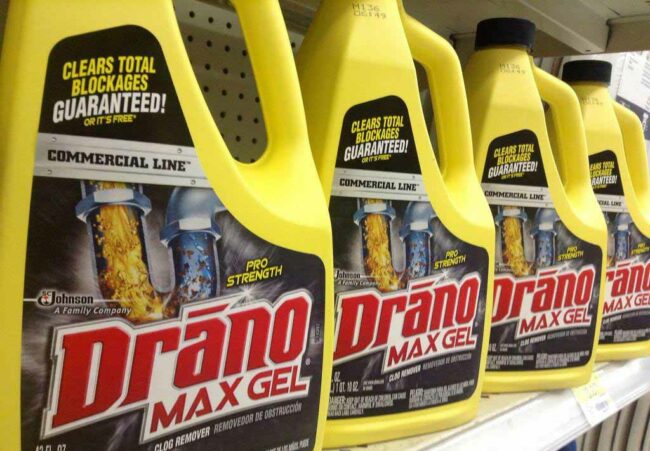Clogged drains can disrupt your daily life, creating more than just a minor inconvenience. They can lead to foul smells, water damage, and even health hazards. Chemical solutions like Drano offer quick relief, but using them incorrectly can spell trouble for your plumbing and your safety. Understanding the hows and whys of Drano’s use is crucial for optimal results, which is why this article aims to offer you a comprehensive guide to using Drano safely and effectively.
The Ideal Duration for Drano: Official Guidelines
The manufacturer’s guidelines for Drano are explicit: allow the product to sit in the drain for a period of 15 to 30 minutes. But why this specific time frame? The chemicals in Drano are designed to work relatively quickly to break down organic matter and other common clogging materials. If left in for less than 15 minutes, you might not get the desired unclogging action. On the other hand, exceeding 30 minutes risks damage to your plumbing due to the heat generated by the chemical reactions involved. So, it’s essential to keep an eye on the clock when using Drano.

The Risks of Overdoing It With Drano
Drano is powerful, but it’s also a double-edged sword. It’s caustic, meaning it can harm human tissue upon contact. Accidental splashes can result in burns, and ingesting it would be life-threatening. Additionally, Drano produces heat as it works to dislodge clogs. If you leave it sitting in your pipes for too long, that generated heat can accumulate, possibly melting PVC pipes or even causing older metal pipes to corrode faster. It’s a problem that could evolve from a simple clog to extensive plumbing repair, which no homeowner wants to deal with.
What Exactly Is Drano?
Drano has been around since the 1920s, making it one of the first chemical clog removers on the market. But what exactly is in it? Drano primarily contains lye, a powerful alkaline substance, among other additives that enhance its clog-busting abilities. These chemicals work together to efficiently dissolve the most common types of clogs, from food particles in kitchen sinks to hair in bathroom drains. However, its effectiveness is not universal across all types of plumbing, especially when it comes to toilet drains, which brings us to our next point.
Why Drano Isn’t for Every Drain
While it may be tempting to pour Drano down any clogged drain, doing so could exacerbate the problem in certain cases. Drano is primarily formulated for sink and bathtub drains, where the plumbing setup allows the chemical to come into direct contact with the clog. Toilets have a different plumbing structure, which often prevents Drano from reaching the clog effectively. The result? Potential harm to your toilet’s plumbing, including possible melting of PVC pipes or cracking of porcelain bowls.
Instances When Drano Should Be Avoided
Using Drano may seem like a universal solution, but there are circumstances where you should steer clear of it. Older homes with corroded pipes are at higher risk of damage from Drano. The chemical formula, while effective on clogs, can also hasten the corrosion process, leading to leaks or even pipe bursts. Similarly, if your plumbing involves rubber or other materials susceptible to chemical damage, you should consult a professional before using Drano or any chemical solution.
Safety Precautions
One might think that using Drano is straightforward—pour it down the drain, wait, and rinse. However, safety precautions are a must. Never mix Drano with other cleaning chemicals, as this could lead to hazardous reactions. Keep pets and children away from treated drains until they’ve been thoroughly rinsed. And, wait at least 24 hours before using the treated drain to ensure all residual chemicals have been flushed away.
Frequently Asked Questions About Drano
Can Drano be left in the drain overnight?
The answer is a resounding no. Allowing Drano to remain in the drain overnight could escalate into a severe plumbing issue. The heat generated by the chemical reactions could lead to melted pipes or intensified clogs, transforming a simple problem into an expensive repair job.
Does Drano damage pipes?
Drano’s chemical composition is powerful, which is a blessing and a curse. While it can efficiently break down clogs, it can also have adverse effects on your plumbing. If your home has older pipes or if they are made of certain materials like PVC, then Drano can accelerate wear and tear. Moreover, misuse or overuse of Drano can result in damage that may not be immediately noticeable but could cause problems down the line.
What if Drano doesn’t work?
If you’ve followed all the guidelines and still find your drain clogged, it may be time to call in a professional. Stubborn clogs could be indicative of larger issues that chemical drain cleaners simply can’t solve, such as tree root invasions or severe pipe damage.
Alternative Solutions
While Drano is often the go-to solution for quick fixes, there are alternative methods for dealing with clogs. For instance, using a plumbing snake can be effective for manually removing blockages. Similarly, environmentally friendly alternatives like vinegar and baking soda solutions can sometimes get the job done without the use of harsh chemicals.
Conclusion
Using Drano is indeed a convenient way to deal with minor clogs, but it’s not a magic potion for all plumbing issues. Understanding its limitations and following guidelines strictly can help you use the product effectively without compromising your plumbing or safety. Always remember, when in doubt, consult a professional. Following a careful approach will save you not just time but also unnecessary expenses in repairing or replacing damaged pipes.

Editorial Staff
Our writers, editors, content managers, and SEO specialist. We all take part in crafting amazing articles. We spend hours ensuring that each article is based on facts, researched, and thorough. You'll never want to click the back button to look for more answers other than here!
